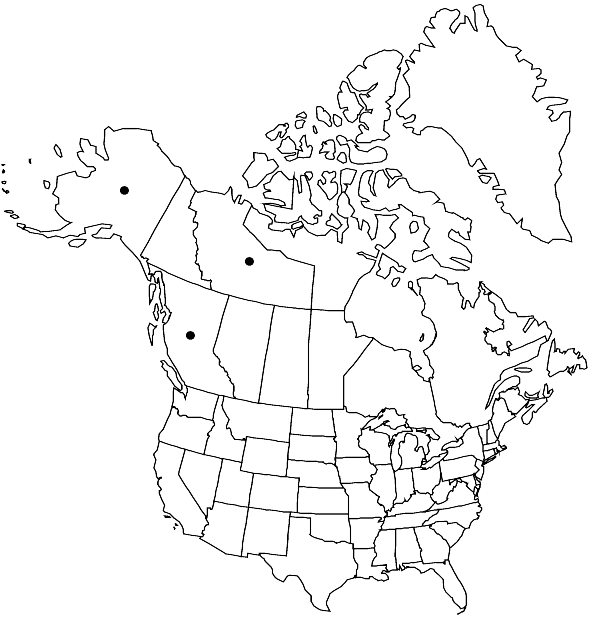Didymodon leskeoides
J. Hattori Bot. Lab. 39: 508, plate 51, figs. 1–12. 1975,.
Plants green to redbrown. Stems to 2 (–6) cm, central strand present. Stem-leaves spreading-twisted and weakly catenulate when dry, spreading and keeled when moist, monomorphic, longlanceolate and often with a whiplike acumen, adaxially grooved along costa, 1–2.5 mm, base ovate and usually flaring at the insertion as small wings, margins broadly recurved to mid leaf, entire, apex narrowly acute to long-acuminate, not fragile; costa short-excurrent in a conic mucro, tapering, pad of cells absent, adaxial costal cells elongate, 2–4 cells wide at mid leaf, guide cells in 1 layer; basal laminal cells differentiated medially, rectangular, walls thin to thickened; distal laminal cells 7–10 µm wide, 1: 1, papillae usually absent, lumens angular or subquadrate, walls irregularly thickened, convex on both sides, 1-stratose. Specialized asexual reproduction absent: possibly through axillary buds. Sexual condition sterile in range of flora. Sporophytes unknown. Distal laminal KOH reaction red.
Habitat: Spray zone of falls, alpine tundra, damp cliff shelf
Elevation: moderate elevations
Distribution

B.C., N.W.T., Alaska, Asia (China), Asia (India), Asia (Japan)
Discussion
Didymodon leskeoides differs from D. rigidulus var. ditrichoides by the short and broadly decurrent leaf margins (the former has long and narrowly decurrent margins). It is easily distinguished from Hymenostylium recurvirostrum, with which it commonly occurs, by its usually olive or orange-brown tinge, as opposed to the green to yellow color of the latter. One collection (Northwest Territories: Scotter 22277, BUF) has unusually long stems, to 6 cm.
Selected References
None.
Lower Taxa
"um" is not declared as a valid unit of measurement for this property."um" is not declared as a valid unit of measurement for this property.
